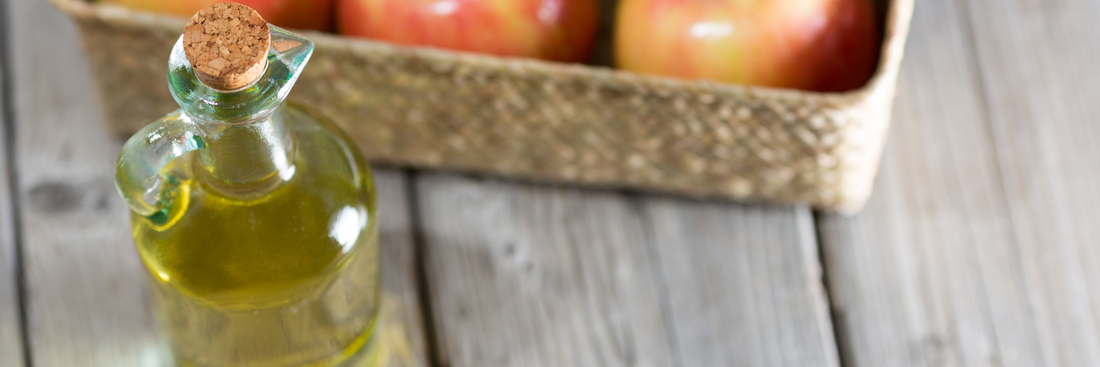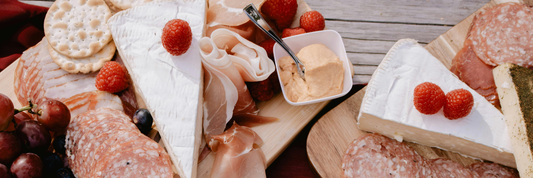When it comes to healthy eating and weight management, many people turn to apple cider vinegar for its potential benefits — but how many calories does it actually contain? Despite its strong, tangy flavor, apple cider vinegar is one of the lowest-calorie condiments you can use, with only a few calories per serving. In this guide, we’ll break down the exact number of calories in apple cider vinegar, explain how they compare with other foods, and show how to use it effectively in your diet without adding unnecessary energy intake.
Calories in Apple Cider Vinegar: Detailed Breakdown
Standard Serving Size (e.g., 1 Tablespoon) and Calories in Apple Cider Vinegar
Apple cider vinegar is extremely low in calories. A standard serving of 1 tablespoon (15 mL) contains approximately 3 calories. The small calorie count comes almost entirely from trace carbohydrates that remain after fermentation. Because acetic acid replaces most of the original sugar, apple cider vinegar is effectively a near-zero-calorie condiment suitable for most calorie-controlled diets.
Calories in Apple Cider Vinegar per Teaspoon, per Tablespoon, per 100 g
-
1 teaspoon (5 mL): ≈ 1 calorie
-
1 tablespoon (15 mL): ≈ 3 calories
-
100 grams (about 6.7 tablespoons): ≈ 21 calories
These numbers are consistent across most raw and filtered varieties because vinegar composition is relatively uniform — roughly 94–96 percent water and 4–6 percent acetic acid.

Comparison of Calories in Apple Cider Vinegar Across Brands
While minor variations exist between brands, the calorie content remains nearly identical because it depends on acetic acid concentration, not brand formulation. For example:
-
Bragg Organic Raw Apple Cider Vinegar (with the Mother): ≈ 0–3 calories per tablespoon
-
Heinz Apple Cider Vinegar: ≈ 3 calories per tablespoon
-
Dynamic Health Organic ACV: ≈ 2 calories per tablespoon
Any difference is due to trace carbohydrate content and labeling precision, not nutritional significance. Therefore, all commercial apple cider vinegars can be considered very low-calorie foods.
Calories in Apple Cider Vinegar with Additives (Honey, Flavour)
When honey, fruit extracts, or sweeteners are added, the calorie count increases substantially.
-
Apple cider vinegar with honey: ≈ 15–25 calories per tablespoon (depending on honey content)
-
Flavored apple cider vinegar drinks or tonics: ≈ 10–40 calories per tablespoon or 20–80 calories per 8 oz serving
These products no longer have the near-zero calorie profile of pure vinegar. Always check the label, as added sugars or juices contribute measurable energy content.

Factors That Influence Calories in Apple Cider Vinegar (Concentration, Dilution)
Several factors can alter the effective calorie count:
-
Acetic acid concentration: Stronger vinegars (6–8 %) may contain slightly fewer carbohydrates per unit, but the difference is nutritionally insignificant.
-
Dilution: When apple cider vinegar is mixed with water — for example, 1 tablespoon in a glass (240 mL) — total calories remain about 3 per glass, effectively negligible.
-
Additives: Blends with fruit juice, herbs, or honey significantly increase sugar content and thus calories.
-
Processing: Filtered vs unfiltered (“with mother”) vinegars differ minimally in calories; the cloudy particles are mostly non-caloric bacterial cellulose.
In essence, pure apple cider vinegar is one of the lowest-calorie condiments available, providing acidity and flavor without adding meaningful energy to your diet.
Carbohydrates, Sugars and Macro Nutrition in Apple Cider Vinegar
Carbohydrate Content of Apple Cider Vinegar
Apple cider vinegar contains under 0.1 grams of carbohydrates per tablespoon, which is nutritionally negligible. Most natural sugars from the apples are converted into ethanol during fermentation and then into acetic acid. The trace carbohydrate residue accounts for its minimal calorie content.
Sugar Content and Its Effect on Calorie Count
Unflavored apple cider vinegar has less than 0.1 grams of sugar per tablespoon, often listed as 0 grams on nutrition labels because the amount is below measurable thresholds. This near-absence of sugar explains why it contributes only 2–3 calories per serving.
However, apple cider vinegar drinks or tonics that include sweeteners (honey, maple syrup, or apple juice) can contain 5–15 grams of sugar per serving, adding 20–60 calories or more. Always distinguish between pure vinegar and vinegar beverages when evaluating calorie impact.

Why Apple Cider Vinegar Has Low Fat and Protein, and Effect on Total Calories
Vinegar is a fermented acetic acid solution, not an energy-dense food. It contains:
-
0 grams fat
-
0 grams protein
-
Trace carbohydrates only
Because fats and proteins are absent, and sugars are almost completely fermented, the result is an ultra-low-calorie product — far lower in energy than condiments such as ketchup or salad dressings.
How Calories in Apple Cider Vinegar Compare with Whole Apple Products
Whole apples derive most of their calories from natural sugars (mainly fructose and sucrose). A medium apple (~180 g) contains about 95 calories and 25 grams of carbohydrates.
In comparison, 1 tablespoon of apple cider vinegar has only 3 calories — less than 1 / 30 of an apple’s calorie value. This dramatic difference occurs because fermentation transforms nearly all apple sugars into acetic acid, leaving a tangy, non-sugar liquid with negligible energy.
In short:
| Product | Serving | Calories | Carbohydrates |
|---|---|---|---|
| Whole Apple | 1 medium (180 g) | ~95 kcal | ~25 g |
| Apple Juice | 1 cup (240 mL) | ~115 kcal | ~28 g |
| Apple Cider | 1 cup (240 mL) | ~120 kcal | ~29 g |
| Apple Cider Vinegar | 1 tbsp (15 mL) | ~3 kcal | <0.1 g |
Practical Use & Tips When Using Apple Cider Vinegar
How to Incorporate Apple Cider Vinegar with Minimal Extra Calories
Pure apple cider vinegar (ACV) is naturally very low in calories—about 3 calories per tablespoon—so it can be added to meals and drinks without affecting overall energy intake.
To keep calories minimal:
-
Use ACV as a flavor enhancer instead of high-calorie condiments like creamy dressings or sauces.
-
Add 1–2 teaspoons to vegetables or grains for brightness without extra fat or sugar.
-
Replace part of oil or salt in recipes with ACV for a tangy, sodium-reduced option.
Because ACV contributes flavor rather than bulk energy, it’s ideal for weight-management diets or when reducing hidden calories in dressings and marinades.
Using Apple Cider Vinegar in Salad Dressings, Marinades — Calculating Extra Calories
When used in recipes, apple cider vinegar itself adds almost no calories, but accompanying ingredients often do.
Typical examples:
-
Simple vinaigrette: 1 tbsp ACV (3 kcal) + 1 tbsp olive oil (120 kcal) → most calories come from oil, not vinegar.
-
Marinade for meat or tofu: 2 tbsp ACV (~6 kcal) mixed with herbs, garlic, and small amounts of oil or soy sauce.
-
Coleslaw dressing: Substituting part of mayonnaise with ACV can reduce total calories by 50–100 kcal per serving.
To calculate accurately, only account for other ingredients—vinegar contributes negligible energy but delivers acidity that lets you cut down on oil or sugar while keeping flavor strong.
Apple Cider Vinegar Diluted in Water – Effect on Calories in Apple Cider Vinegar Mixture
A common way to consume ACV is by diluting 1–2 tablespoons (15–30 mL) in a large glass (200–250 mL) of water.
-
This mixture still provides only 3–6 calories total—essentially no change after dilution.
-
Adding lemon juice, herbs, or unsweetened spices won’t alter calorie count significantly.
-
However, if you mix ACV with honey, maple syrup, or fruit juice, calories increase quickly.
For example: -
1 tbsp ACV + 1 tsp honey = ≈23 calories
-
1 tbsp ACV + ½ cup apple juice = ≈60 calories
So, for a true low-calorie beverage, stick to water-diluted ACV without sweeteners.
FAQs About How Many Calories in Apple Cider Vinegar
How many calories are in 1 tablespoon of apple cider vinegar?
About 3 calories per tablespoon (15 mL) — almost negligible in a typical diet.
Does apple cider vinegar have zero calories?
Not completely zero, but close — it contains 2–3 calories per tablespoon, often rounded to zero on labels.
Are calories in apple cider vinegar different for “with mother” vs filtered?
No. Both have nearly the same calorie content; the “mother” adds no measurable energy value.
Will the calories in apple cider vinegar affect my blood sugar or weight?
Unlikely. The calories are minimal, and vinegar may slightly help steady blood sugar when used with meals.
How many calories in apple cider vinegar-based drinks or tonics?
Sweetened ACV drinks or tonics can contain 20–80 calories per serving, depending on added honey or juice.
Is consuming large amounts of apple cider vinegar adding calories?
Even large amounts contribute few calories, but excess intake can irritate the stomach or teeth — moderation is best.
Conclusion
Apple cider vinegar is virtually calorie-free, containing around 3 calories per tablespoon and almost no fat, protein, or sugar. Whether used in salad dressings, diluted drinks, or cooking, it adds flavor without adding significant calories — making it ideal for calorie-conscious or low-carb diets. Just remember to choose unsweetened vinegar and use it in moderation for the best health and taste results.







